News
EPJ B Highlight - How to stop diseases and forest fires from spreading
- Details
- Published on 12 June 2019
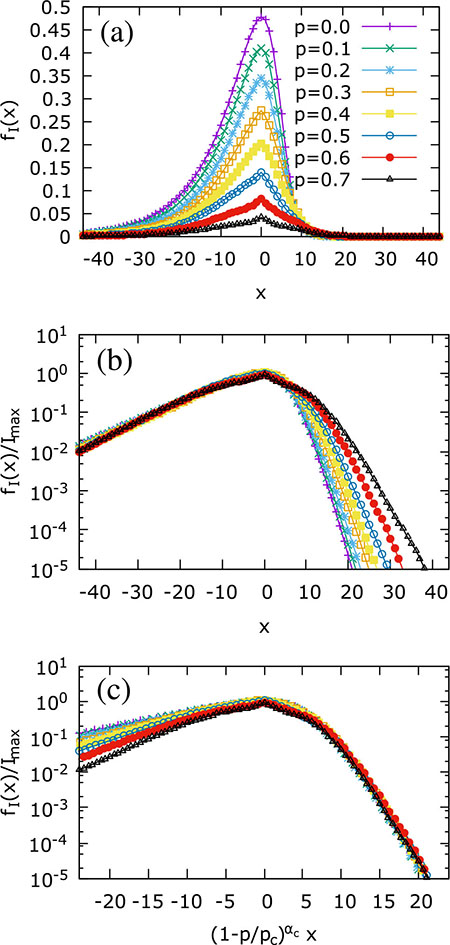
A new model, published in EPJ B and exploring how epidemics spread, could help prevent infections and forest fires from getting out of hand
Recently, epidemics like measles have been spreading due to the lack of vaccinations, and forest fires have become increasingly frequent due to climate change. Understanding how both these things spread, and how to stop them, is more important than ever. Now, two researchers from the National Scientific and Technical Research Council in Bariloche, Argentina, have studied the way epidemics spread in heterogeneous populations. Their findings were recently published in European Physical Journal B.
EPJ E Highlight - No assumptions needed to simulate petroleum reservoirs
- Details
- Published on 04 June 2019

Hydrocarbons trapped within porous media are easier to model with computer simulations than researchers previously assumed – a discovery that opens up new possibilities for thermodynamics research.
Hidden deep below our feet, petroleum reservoirs are made up of hydrocarbons like oil and natural gas, stored within porous rock. These systems are particularly interesting to physicists, as they clearly show how temperature gradients between different regions affect the gradients of fluid pressures and compositions. However, because these reservoirs are so hard to access, researchers can only model them using data from a few sparse points, meaning many of their properties can only be guessed at. In a new study published in EPJ E, physicists from France and Vietnam, led by Guillaume Galliero at the University of Pau, have found that this guesswork actually isn’t necessary. They show that if the right choices are made when constructing models, no assumptions are needed in order to calculate the impact of temperature gradients on pressure and composition gradients.
EPJ E Highlight - Dowsing for electric fields in liquid crystals
- Details
- Published on 03 June 2019

The orientation of the ordered molecules that make up nematic liquid crystals can change under electric fields, and can be used to detect subtle electrical effects.
You may not know it, but you probably spend several hours a day looking at nematic liquid crystals; they are used in virtually every smartphone, computer and TV screen. They are liquids composed of elongated molecules, which in some situations can be oriented in a curious way termed the 'dowser texture', which is sensitive to external conditions. Physicists Pawel Pieranski of the Universite Paris-Sud, Paris, France and Maria Helena Godinho of Universidade Nova de Lisboa, Lisbon, Portugal have now published a paper in EPJ E that shows that the dowser texture responds to electric fields in different ways in different nematic materials.
EPJ B Highlight - Inhibitory neurons have two types of impact on brain oscillations
- Details
- Published on 28 May 2019
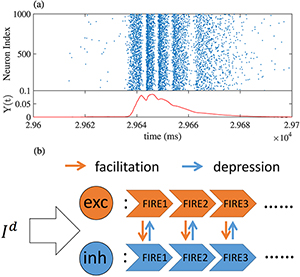
A certain type of neuron, called inhibitory neurons, can have two types of overall effect on oscillations in the brain
Studying the brain involves measuring the activity of billions of individual brain cells called neurons. Consequently, many brain measurement techniques produce data that is averaged to reflect the activity of large populations of these neurons. If all of the neurons are behaving differently, this will average out. But, when the behaviour of individual neurons is synchronized, it produces clearly visible oscillations.
Synchronisation is important to understanding how neurons behave, which is particularly relevant with regard to brain diseases like Alzheimer’s, epilepsy and Parkinson’s. Now, a group of researchers from the Institute of Computational Physics and Complex Systems at Lanzhou University, China, has used a combination of two computer models to study the ways different kinds of neurons can impact synchronisation. The study is published in the European Physical Journal B.
EPJ N Highlight - Calculation of ion irradiation damage using Iradina code
- Details
- Published on 23 May 2019
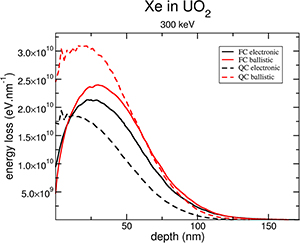
Binary Collision Approximation (BCA) calculation allows for two types of damage calculation: Full Cascade and Quick Calculations. Full Cascade mode describes fully the cascades while in Quick Calculations only the trajectory of the ion is followed, and effective formulas give an estimation of the damage resulting from each collision of the ion. Quick Calculation of damage are implemented in the Iradina code both for elemental and multi-component solids. Good agreement is obtained with SRIM. It is shown that Quick Calculations are unphysical in multi-component systems. The choice between Full Cascade and Quick Calculations is discussed. It is advised in this paper to favour Full Cascade over Quick Calculation because it more grounded physically and applicable to all materials. Quick Calculations remain a good option for comparisons with former studies or for pure solids in the case of actual quantitative comparisons with neutron irradiations simulations in which damage levels are estimated with the NRT (Norgett-Robinson and Torrens) formulas.
EPJ Data Science Highlight - What can we learn from billions of food purchases derived from fidelity cards?
- Details
- Published on 23 May 2019
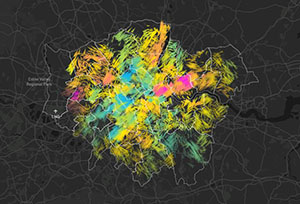
For your health, what you eat is more important than what you earn.
This result comes from our latest project “Poor but Healthy”, which was published in EPJ Data Science, and comes with a @tobi_vierzwo’s stunningly “beautiful map of London” that author Daniele Quercia invites everyone to explore.
By combining 1.6B food item purchases with 1.1B medical prescriptions for the entire city of London for one year, researchers discovered that, to predict health outcomes, socio-economic conditions matter less than what previous research has shown: despite being of lower-income, certain areas are healthy, and that is because of what their residents eat.
Read the full blog post on Medium.
EPJD Topical review - Plasma potential probes for hot plasmas
- Details
- Published on 22 May 2019
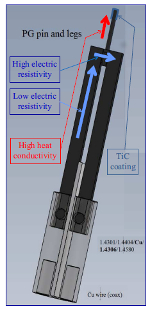
Plasma probes are well-established diagnostic tools, being relatively simple to construct and easy to handle. The most easily accessible parameter is the floating potential, but the floating potential of a cold probe is not very significant; much more important and relevant is the plasma potential. However, in most types of plasmas, consisting mainly of electrons and only positive ions, the higher mobility of the electrons means that the floating potential is more negative than the plasma potential by a factor proportional to the electron temperature.
In a new Topical Review in EPJD co-authored by teams from Austria, Slovenia, Denmark and Italy, the authors present a review of probes whose floating potential is close or ideally equal to the plasma potential. Such probes are known as Plasma Potential Probes (PPP), and they can either be Electron Emissive Probes (EEPs) or so-called Electron Screening Probes (ESPs). These probes make it possible to measure the plasma potential directly and thus with high temporal resolution.
EPJ Data Science Highlight - How news outlets target audiences
- Details
- Published on 22 May 2019

The mass media is one of the social forces with the most active transformative power. However, news reach people unequally. Many factors shape the distribution and influence of news media coverage. Some of these factors are the geographic reach of newspapers (national versus regional newspapers), the direct targeting of specific sectors of the population, and/or the political ideology of the media outlet itself.
In a recent article in EPJ Data Science, Erick Elejalde, from the L3S Research Centre in Hannover, Germany, explains how their work helps to identify whether or not an outlet’s coverage deviates from the purely geographic influence to a more sophisticated behavior involving the weight of political and socioeconomic interests.
Read the post on the SpringerOpen blog.
EPJ Plus Focus Point: Rewriting Nuclear Physics textbooks: Basic nuclear interactions and their link to nuclear processes in the Cosmos and on Earth
- Details
- Published on 20 May 2019
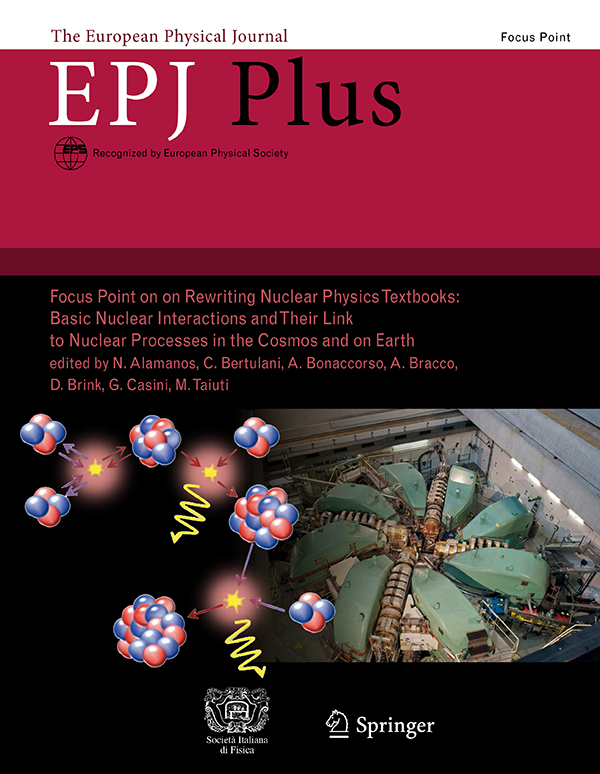
This topical collection contains the lectures presented at the Summer School ``Re-writing Nuclear Physics textbooks: Basic Nuclear Interactions and Their Link to Nuclear Processes in the Cosmos and on Earth" which was held at the INFN Sezione di Pisa and Department of Physics of the University of Pisa in July 2017. The School followed the format of its first edition (``Re-writing Nuclear Physics textbooks: 30 years with Radioactive Ion Beam Physics") held at the very same places two years earlier, and whose lectures have been published in EPJ Plus.
The scope of this new collection is to highlight the wonders of the Nuclear Interaction as it manifests itself in natural phenomena on Earth and in the Astrophysical context. Again, all of the contributions contain state-of-the-art information presented for an audience of educated but not necessarily expert physicists.
EPJ Plus Focus Point on New Challenges in the Scientific Applications to Cultural Heritage
- Details
- Published on 17 May 2019
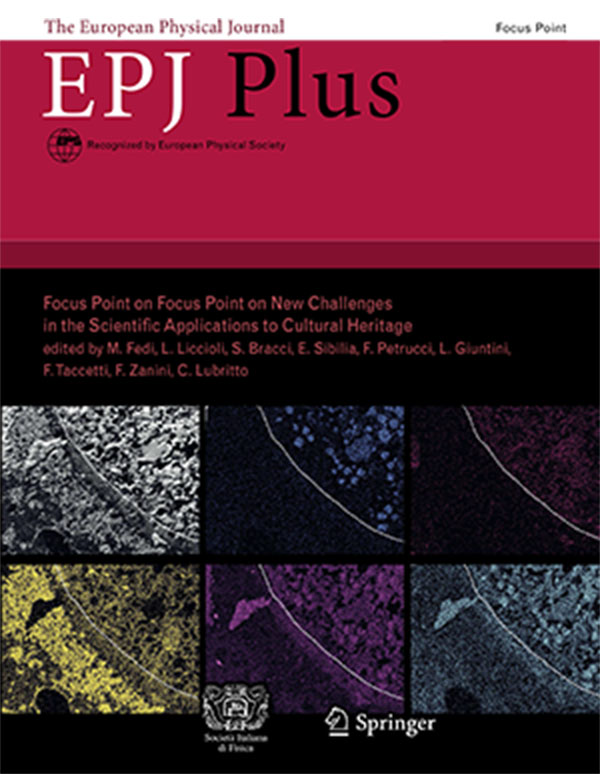
In recent years, the collective efforts of scientists in the application of new technologies and methodologies to different class of archaeological material are receiving significant benefits from advances in technology.
At the same time new strategies and, in particular, networking skills and resources encouraging interaction between both humanities and sciences researchers are of crucial importance to face issues concerning the study, restoration and conservation of artworks and archaeological contexts.




